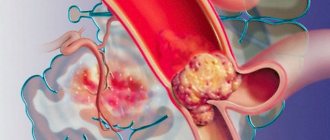Increased phosphorus in the blood: causes, symptoms, what does it mean?
Phosphorus is a macroelement necessary for human life. It is involved in the transmission of nerve impulses, is responsible for the growth and strength of the bone skeleton, and helps metabolism at the cellular level.
Attention! The norm of phosphorus in the blood is 0.81-1.45 mmol/l. Deviation from normal values is dangerous to the life and health of the patient.
If phosphorus in the blood is elevated, a thorough examination is necessary. An increase in phosphorus can be a sign of kidney and liver pathologies, cancer, and phosphate poisoning.
What causes increased phosphorus levels?
Phosphorus is an essential macroelement that participates in almost all processes and ensures normal human life.
Phosphorus, present in the human body as organic and inorganic compounds, is responsible for the uninterrupted functioning of the central nervous system, muscle function, respiration and fermentation processes.
Phosphorus makes up most of the bone skeleton. In addition, the transmission of nerve impulses, cell growth and division, and metabolism are impossible without the participation of phosphates.
Phosphates regulate the absorption of many substances, such as vitamin D and glucose. The macroelement is responsible for metabolism and cellular energy metabolism, promotes the rapid and efficient production of carbohydrates and proteins.
The many aspects and areas of phosphorus functioning explain the importance of the macronutrient content in the human body. Normally, phosphorus in the blood is in the range of 0.87 – 1.45 mmol/l.
At the same time, children and older people have their own limits, and deviations from standard values in this case are acceptable and are associated with changes in hormonal levels.
Causes of high levels of phosphorus in the blood include, first of all, following a diet with large amounts of the element.
This situation is possible if there are a lot of protein dishes in the diet.
Excessive consumption of canned foods and carbonated drinks can also increase phosphate levels in the blood.
Since phosphorus is involved in many metabolic processes, its level will increase in liver pathologies (for example, cirrhosis) and impaired kidney function (including Addison's disease).
Hyperphosphatemia is often observed in cancer patients, and the condition most often occurs in patients with blood and lung cancers.
Sometimes high levels of a macronutrient are temporary. For example, a deviation from the norm to a greater extent is typical for pregnant women in the first trimester and is associated with early toxicosis.
:
Long-term contact with organophosphorus substances can increase the amount of phosphates in the blood. Gardeners and agricultural workers are at risk, since these compounds are contained in high doses in fertilizers.
In addition, military personnel exposed to chemical warfare agents may suffer from high levels of phosphorus in the blood.
Symptoms and diagnosis of excess phosphorus
Prolonged excess of the normal value of phosphorus in the blood is fraught with calcium deposition in tissues and organ damage. You should seek medical help promptly if you have signs of hyperphosphatemia.
A moderate excess of phosphate in the blood may not make itself felt for quite a long time, but this condition still poses a threat to human health.
Diabetes mellitus and any metabolic disorders are a direct indication for monitoring the concentration of phosphates in the body.
Cancer patients with metastases may suffer from bone breakdown, which manifests itself as high levels of phosphorus in the blood.
Since phosphorus is directly related to calcium, changes in the concentration of one substance affect the blood levels of the other. Patients with diagnosed hypocalcemia should pay attention to blood phosphate levels.
An increase in phosphorus in the blood is typical for patients with pathologies of the parathyroid gland. Phosphate levels are beyond normal limits in hypoparathyroidism and pseudohypoparathyroidism.
Other groups of patients without a definitive diagnosis need to be monitored for signs of hyperphosphatemia.
Symptoms of the disease include:
- kidney stone disease;
- anemia;
- low white blood cell count;
- any bleeding;
- fragility and fragility of bones.
All these signs are a consequence of deterioration of the liver and kidneys, a malfunction of the hematopoietic system, and an imbalance of phosphorus and calcium.
Pathology can be diagnosed using a simple blood test. The study is carried out in the morning (between 8 and 11 o’clock), before breakfast.
You should not eat food 8 hours before the procedure (the permissible fasting period is no more than 14 hours).
Interpretation of test results should only be made by a physician and does not constitute a diagnosis in itself.
In addition, a blood test for phosphorus is recommended to be combined with other examinations, especially with an analysis of calcium levels in the blood.
Treatment and prevention of high phosphate levels
Treatment of elevated phosphorus levels in the blood is based, first of all, on eliminating the cause of the deviation. Therapy depends on the pathology of the organs that caused the change in the concentration of the macroelement in the serum.
With hyperphosphatemia during an exacerbation period, there may be a need for emergency therapy, for example, hemodialysis for tumor collapse syndrome.
For endocrine disorders, therapy consists of hormonal correction. In patients with renal failure, the mainstay of treatment is reducing dietary phosphorus intake.
Such patients are prescribed a low-protein diet and phosphate binders. Patients with end-stage kidney disease are prescribed calcium carbonate.
Patients on dialysis are recommended to take Sevelamer. The drug binds phosphates in the digestive tract, reducing their concentration in the blood serum.
Treatment of hyperphosphatemia is carried out strictly under the supervision of a physician. Self-medication can significantly worsen the patient’s condition and lead to serious complications.
With hyperphosphatemia, diet becomes an obligatory component of complex therapy and prevention of pathology.
Foods high in protein are excluded from the patient's diet: dairy and meat products, nuts, etc. The intake of medications containing phosphates, vitamin D and calcium is also controlled.
General recommendations for the treatment and prevention of elevated phosphorus levels include giving up bad habits, taking multivitamin complexes, and moderate physical activity.
Timely treatment allows you to eliminate the symptoms of the pathology in the shortest possible time and eliminate the development of complications.
Source:
fine
We often heard in childhood that we need to eat fish, it contains useful phosphorus. And only as we grew up, we learned how important this microelement is for the human body.
Firstly, phosphorus is concentrated to a greater extent in our bones and teeth in conjunction with calcium; it is these two elements that make bone tissue mechanically strong, while correctly forming its structure.
In addition, phosphorus is essential for the body to produce energy, which means we can move, think and simply live.
Phosphorus compounds are present or somehow involved in almost all cells of the body, as well as in physiological, chemical and metabolic processes in the body.
The role of this element in the body should not be underestimated, because without it all kinds of vital processes of movement, thinking, contraction, breathing, etc. will simply be impossible.
A test to determine the level of phosphorus in the blood is usually prescribed to patients if there is a suspicion of kidney or bone disease, if it is necessary to find a problem with the parathyroid glands or cardiac activity.
Let's talk in more detail about this indicator, and consider what the norm of phosphorus in the blood of a healthy person should be.
The normal level of phosphorus in the blood
It is necessary to monitor standard phosphorus indicators to find out whether there are deviations in one direction or the other. In both cases, it is necessary to take measures to normalize and stabilize the level of the indicator.
It is necessary to take into account that the standard values are indicated for the average person with a measured lifestyle, therefore, when assessing the results, the doctor must take into account whether the patient has individual characteristics of the body: is he subject to increased stress, has chronic diseases or disorders, etc.
On average, the level of phosphorus in the blood is considered normal if it is within the following limits:
- For newborns - 1.19-2.91 mmol/l;
- For children under 12 years old - 1.45-1.78 mmol/l;
- For adults - 0.81-1.45 mmol/l.
It should be noted that the rate of phosphorus in the blood of women during pregnancy or breastfeeding should increase, due to the fact that these periods are characterized by a physiological lack of the mineral in the body.
When inorganic phosphorus in the blood is below normal, the reasons can be varied, but the main ones can be identified: drug addiction, alcoholism, gout, rickets, pathological conditions of the parathyroid glands, malabsorption of substances in the intestine. In newborn babies, a decrease in phosphorus levels may be associated with incorrect selection of formula for artificial feeding, which does not fully meet the baby’s needs.
Source: https://krovinushka.ru/analizi/fosfor-v-krovi-povyshen-prichiny.html
How does phosphorus deficiency manifest?
The fact that tissues and blood do not contain enough substance is evidenced by some manifestations of deterioration in the body’s condition. These include:
- decreased performance,
- increased fatigue,
- muscle pain,
- decreased immunity,
- increased fragility of nails and hair.
If such unpleasant symptoms occur, you should consult a doctor. The causes of poor health are not always associated with a deficiency of this element; sometimes they are caused by a general metabolic disorder and vascular pathology.
- cell division during growth,
- cell division for natural tissue renewal,
- reproduction of genetic information,
- maintaining bone strength,
- maintaining the normal condition of tooth enamel,
- maintaining the normal condition of gum tissue,
- ensuring proper kidney function,
- ensuring proper functioning of the cardiovascular system,
- accumulation of energy in cells,
- release of energy from cells,
- fat metabolism.
Phosphorus is a vital microelement for humans, which is the main component of all cells of the body. It is involved in most metabolic processes in the body and is necessary for the formation of tissues (especially nerve and bone).
Inorganic Phosphate, Phosphorus, Serum P, PO4, Phosphate.
Colorimetry with ammonium molybdate.
What biomaterial can be used for research?
Venous, capillary blood.
How to properly prepare for the study?
Do not eat for 2-3 hours before the test; you can drink clean still water.
General information about the study
Phosphorus is a mineral found in the body in the form of organic and inorganic compounds. The terms phosphorus and phosphate are used interchangeably when talking about testing levels in the body, but it is worth considering that the amount of inorganic phosphate is being counted.
Phosphorus is needed by the body for energy production, muscle and nervous system functions, and bone growth. Phosphates, being a kind of buffer, play an important role in maintaining the acid-base balance.
Phosphorus enters the body with food. Found in many foods, it is absorbed fairly quickly in the small intestine. About 70-80% of phosphorus in the body is bound to calcium, forming the framework of bones and teeth, 10% is in muscles and about 1% in nervous tissue. The remaining part is contained in all cells of the body as an energy reserve. Normally, about 1% of all phosphorus is in the blood. Many foods (beans, peas, nuts, grains, vegetable oils, eggs, beef, chicken, fish) contain significant amounts of phosphates. A stable concentration of phosphorus is maintained by the regulation of absorption in the intestines and excretion in the kidneys. In addition, phosphate levels depend on the amount of parathyroid hormone, calcium and vitamin D.
Phosphorus deficiency (hypophosphatemia) is caused by disorders of the acid-base balance, malnutrition, malabsorption, hypercalcemia and disorders affecting the processes of excretion in the kidneys. The cause of excess phosphorus (hyperphosphatemia) may be excessive intake of the mineral from food, hypocalcemia and kidney damage.
People with a moderate deficiency of this mineral may not experience symptoms of deficiency. A severe lack of phosphorus is indicated by muscle weakness and confusion. Interestingly, the signs of excess phosphorus are similar to the symptoms of calcium deficiency: muscle cramps, numbness, loss of consciousness.
What is the research used for?
To diagnose various pathological conditions that cause disturbances in phosphorus-calcium metabolism and monitor their treatment (together with checking the level of calcium, parathyroid hormone and/or vitamin D).
When is the study scheduled?
- As an additional study for hypo- or hypercalcemia (since a moderate deficiency or excess of phosphorus may not appear).
- For symptoms of kidney and/or gastrointestinal pathology.
- Regularly, when pathological conditions have already been diagnosed that cause significant changes in the level of phosphorus and/or calcium (to monitor the effectiveness of their treatment).
- For diabetes mellitus or signs of acid-base imbalance.
Reference values
Low phosphorus levels can be caused by:
- overdose of diuretics (uncontrolled loss of phosphates in the urine),
- insufficient intake of phosphorus from food,
- alcoholism (most often there is also an enzyme deficiency, nutritional and absorption disorders),
- burn disease (accordingly, an imbalance of many types of metabolism and excessive loss of electrolytes and fluid from the affected surface),
- diabetic ketoacidosis (due to increased carbohydrate metabolism),
- hyper- or hypothyroidism,
- hypokalemia,
- constant use of antacids,
- rickets (in children) and osteomalacia (in adults),
- hyperinsulinism (insulin is involved in the transport of glucose into cells, which is impossible without phosphates),
- liver diseases,
- septicemia,
- severe vomiting and/or diarrhea.
We recommend reading: Non-calculous (calculous) cholecystitis: what it is, symptoms and treatment of a chronic disease
High phosphorus levels (hyperphosphatemia) are most often associated with impaired renal function and uremia. Its reasons may be:
- renal failure, any severe nephritis (with increased creatinine and urea levels),
- hypoparathyroidism,
- osteosarcomas, metastatic bone lesions and multiple myeloma,
- diabetic ketoacidosis,
- overdose of phosphorus-containing drugs,
- fractures in the healing stage,
- overdose of vitamin D,
- Addison's disease (insufficient production of hormones by the adrenal glands),
- acromegaly.
What can influence the result?
- Eating before donating blood may cause a false decrease in phosphorus levels.
- The level of phosphorus in blood taken in the evening will be higher than the result from a morning sample (due to diurnal fluctuations in the concentration of the mineral).
- Hemodialysis helps reduce phosphorus concentrations.
- Medicines that increase phosphorus levels: anabolic steroids, androgens, beta-adrenergic blockers, ethanol, ergocalciferol, furosemide, growth hormone, hypothiazide, phosphorus-containing drugs, vitamin D, tetracycline, methicillin, injectable contraceptives.
- Medicines that lower phosphorus levels: diacarb, antacids containing aluminum, amino acids, anesthetics, calcitonin, carbamazepine, adrenaline, estrogens, glucocorticoids, insulin, isoniazid, oral contraceptives, phenytoin, sucralfate, mannitol.
- Constantly high levels of phosphorus pose a risk of organ damage due to calcification (deposition of calcium phosphate in tissues).
- Normally, phosphorus concentrations are higher in children than in adults. This is due to increased secretion of growth hormone until puberty.
- After taking laxatives containing sodium phosphate, phosphorus levels increase after 2-3 hours. Although the rise is temporary (for 5-6 hours), this factor should be taken into account if it is impossible to explain the reason for the increase in phosphorus concentration by anything else.
- Excessive administration of vitamin D, as well as intravenous glucose, can affect phosphorus levels in the blood and urine (phosphates help move glucose into cells).
- Most often, changes in phosphorus levels are detected by searching for the causes of changes in calcium concentration.
- When interpreting the reasons for deviations from the norm in phosphorus concentrations, it is worth taking into account the calcium level.
Who orders the study?
Therapist, urologist, nephrologist, endocrinologist, gastroenterologist, nutritionist, gynecologist, pediatrician.
Phosphorus is needed by the body for energy production, muscle and nervous system functions, and bone growth. Phosphates, being a kind of buffer, play an important role in maintaining the acid-base balance.
Increased phosphorus in the blood: causes, symptoms, what does it mean? - Diagnostics
Phosphorus is an intracellular enzyme.
Thanks to the presence of this substance, first of all, the central nervous system functions normally; the element also affects other mechanisms in the body.
Phosphorus is an electrolyte along with potassium, chlorine, sodium and calcium. Phosphorus detection analysis is not so popular, but nevertheless carries important information about the state of the human body.
What does this mean and what functions does the substance perform?
This element takes part in many physiological and chemical processes of the human system.
Here are just some of the functions of this substance:
- This substance forms the basis of nucleic acids, which influence the division and formation of cells and are aimed at storing and applying genetic information.
- Phosphorus is also present in bone tissue; its volume there accounts for almost 85% of the total amount of the substance in the body.
- Phosphorus forms the basis of healthy tooth and gum tissue.
- The element serves to normalize the functioning of the heart muscle and kidneys.
- The element takes part in the storage system and the release of energy from the cellular area.
- Organizes the transmission of nerve impulses.
- Forms the correct exchange of adipose tissue and starches.
The role of phosphorus in the human body is described in the video:
Normal content in the body
Each age and gender will have its own norm of this element in the body.
Among women
In the female body system up to 60 years of age, the composition of phosphorus as a whole does not differ from that of the male body.
Attention! Normally it is 0.87–1.45 mmol/l.
But after 60 years of age, test data will change. During this period, changes occur in women, and the norm of this element will be 0.9–1.32 mmol/l.
In men
Young and middle-aged men (up to 60 years of age) have an average phosphorus level of 0.87–1.45 mmol/l. After 60 years – 0.74–1.2 mmol/l.
In children
Children under 2 years of age have a phosphorus norm of 1.45–2.16 mmol/l.
From 2 years to 12 years – 1.45–1.78 mmol/l.
And after 12 years of age, data on the amount of phosphorus in the blood are equal to adults, that is, they will be equal to 0.87–1.45 mmol/l.
In pregnant women
The normal phosphorus level in pregnant women will depend on the trimester:
- The norm for the first trimester of pregnancy is considered to be a phosphorus level of 1.0-1.57 mmol/l.
- In the second trimester, the level of this substance decreases and will be equal to 1.0-1.4 mmol/l.
- In the third trimester, the norm of phosphorus in the blood is 0.87-0.47 mmol/l.
Important! When going for tests to determine the amount of phosphorus, you should know that the indicator of this substance can vary depending on many factors. Even within a day, the amount of phosphorus will vary.
If, for example, a person was engaged in physical exercise, then the analysis will show a completely different figure than at rest.
Therefore, before conducting the test, doctors will give the necessary recommendations in order to identify the most reliable indicator of this element in the blood.
Required amount of element per day
In order for the body to function in its normal mode and to avoid various pathological abnormalities, it is necessary to consume a normal amount of phosphorus per day.
Thus, the average sufficient intake of this element per day is 1200-1600 mg. During the period of bearing a child and breastfeeding, a woman is responsible for two organisms, so the daily need for this element increases, and it reaches 3000-3800 mg.
The required amount of this element for young children is:
- For infants under 1 year – 300-500 mg.
- In the period from 1 year to 3 years – 800 mg per day.
- Children from 3 to 7 years - intake increases to 1350 mg.
- From 7 years to 10 years – the daily phosphorus intake is already 1600 mg.
- The age from 11 to 18 years is characterized by intensive growth, so the need for this element increases - it is equal to 1800 mg per day.
All these figures are given conditionally; it is worth understanding that if a person is engaged in physical labor, then the body’s need for phosphorus increases.
Attention! The turnover of phosphorus in the body is influenced by certain hormones and substances. This process is regulated by parathyroid hormone, thyroid calcitonin, vitamin D and insulin.
- Therefore, a sufficient amount of phosphorus in the blood will be determined not only by its intake and absorption, but also by the proper functioning of other organs and systems.
- The video describes what excess and lack of phosphorus leads to in the human body:
Reasons for the increase
The level of this element in the blood may increase due to illness, while taking certain medications, or due to a lack of certain vitamins.
Sometimes a reduced or, on the contrary, increased test value for an element such as phosphorus can indicate the individual characteristics of the organism and in each specific case is considered the norm.
Reference! Among the priority diseases that provoke an increase in phosphorus in the blood is hypoparathyroidism. This is a disease of the thyroid gland when it produces insufficient quantities of the parathyroid hormone, which is responsible for the regulation of phosphorus and calcium in the body.
Also, a high rate of production of this element can be observed in other pathologies:
- Insufficiency of cardiac activity.
- Osteoporosis.
- Diabetes.
- Cirrhosis of the liver.
- Chronic kidney pathologies.
- Excess vitamin D.
At the moment of a bone fracture, the body begins to produce phosphorus in large quantities, this is necessary so that the bone tissue has the opportunity to heal faster.
The phosphorus index can increase during the period of breakdown of bone and cartilage tissue of joints in cancer. In addition, a high level of this element will also occur while taking cytostatics indicated for cancer or benign tumors.
When donating blood for phosphorus, you can find it higher than normal if a person eats mostly protein foods and foods fortified with vitamin D.
There are also professions in which one has to come into contact with this element, for example, agricultural workers are forced to use fertilizers with phosphorus.
Why is an increased value dangerous?
A constant increase in phosphorus in the blood can lead to various deviations in human health.
So, against the background of an excess of this element, the patient may experience the following disorders:
- Development of kidney stones.
- Liver diseases.
- Anemia due to iron deficiency.
- Leukopenia, with this disease there is a decrease in the content of leukocytes.
- In parallel with the increase in phosphorus, the level of calcium in the blood also increases, which leads to the formation of atherosclerotic plaques and the development of a disease such as atherosclerosis.
- Acidosis, when the alkaline content in the blood increases.
- Frequent bleeding.
- Development of cancer cells in the intestines.
These diseases lead to hemorrhages, bleeding, calcium deficiency and osteoporosis.
Due to the increase in calcium, the work of many internal organs and systems is disrupted - digestive, cardiac activity, kidney and liver function, etc.
Often, an excess of phosphorus is indicated by various small hemorrhages , especially in the area of the retina. A person’s digestion may be impaired, he will often suffer from headaches, his heart rhythm is disturbed, and lumbodynia develops.
Reasons for the downgrade
A lack of this element in the blood may be due to the following reasons:
- Errors in human nutrition, its inferiority.
- In case of metabolic disorders.
- Excess of elements such as magnesium, calcium and aluminum in the blood.
- The presence of chronic illnesses.
- Poisoning of the body, including long-term intoxication with alcohol or drugs.
- Passion for carbonated sweet drinks.
- In infancy, a lack of phosphorus can be caused by artificial nutrition, which often leads to rickets.
How does phosphorus deficiency manifest?
A condition in which there is not enough phosphorus in the blood is called hypophosphatemia.
It manifests itself as follows:
- Weakness in muscles and joints.
- General weakness.
- Frequent mood changes.
- Depressive state.
- Sometimes consciousness is disturbed.
- Limb spasms develop.
- Appetite decreases, the person loses weight.
Attention! Very low levels of phosphorus can even be fatal.
How is the level of the substance in the body regulated?
To slightly increase or decrease the phosphorus content, you need to choose the right diet.
It is advisable to include the following products in your diet:
- Soft cheese, processed.
- Sea fish.
- Seafood, especially shrimp, crabs, squid.
- Oat, wheat or rice bran.
- Pumpkin, sunflower or squash seeds.
- Dairy products.
What products contain phosphorus are described in the video:
What does a urine test show?
A urine test to determine the amount of phosphorus may be prescribed for some painful conditions:
- The analysis is carried out if it is impossible to establish an accurate diagnosis for hyperphosphatemia; this could be renal failure, hypoparathyroidism, tumor lysis syndrome, etc. It is also carried out for hypophosphatemia, suspected hyperparathyroidism, Fanconi syndrome, etc.
- To prevent excess vitamin D and rickets in children.
- To detect nephrolithiasis.
Preparing for analysis
Quite often, blood is taken for analysis to determine the phosphorus level, and the content of inorganic phosphorus in human blood is determined.
It is worth remembering that this substance can change its indicators during the day, so you need to know about the rules for taking the test:
- Blood sampling occurs in the morning, most often this time is determined at 8-11 o'clock.
- Blood is donated on an empty stomach; you must stop eating 8 hours before testing.
- On the eve of the study, fatty, fried and other heavy foods are excluded.
- It is acceptable to drink plain drinking water.
The blood is taken from the venous region, and in young children it is sometimes taken from the heel. A qualified doctor interprets the tests.
If a patient submits urine for analysis, no special preparation is required:
- There are usually no dietary restrictions.
- Daily urine is collected.
- To do this, during the day, small portions of urine secreted throughout the day are poured into a clean liter jar, after which you will need to pour it into a small container and take it for analysis.
Important! You should definitely tell your doctor about all medications you are taking. If it is possible to stop taking medications before the analysis, then you should stop taking diuretics at this time.
How to properly prepare for testing is described in the video:
Decoding
To decipher the analysis for phosphorus, the doctor will definitely recommend checking the calcium level in the blood, since these two elements function in tandem, and a disruption in the functioning of one substance entails a change in the indicators of the other.
If hypocalcemia is diagnosed, then it will be necessary to check the level of phosphorus in the body.
Reference! Most often, phosphorus increases due to disorders such as malfunctions in the parathyroid gland, hypoparathyroidism and pseudohypoparathyroidism.
The analysis is deciphered by a doctor, and a diagnosis is made based on the results. In addition, additional tests will be needed, primarily a study to determine the concentration of calcium in the body.
There are two main ways to identify inorganic compounds:
- Through blood donation , where phosphorus is found in the insoluble fraction, the average normal value is considered to be 0.81-1.45 mmol/l. In addition, the constituent insoluble part of this substance is contained in membranes. In joints, phosphorus is found in calcium salt compounds.
- Phosphates can also be found in urine. At normal levels, they are released in the amount of 16-64 mmol per day.
Source: https://zdoroviecrimea.ru/issledovaniya/fosfor-v-krovi-povyshen-prichiny-simptomy-chto-eto-znachit.html
Interaction of phosphorus with other substances
The content and absorption of phosphorus in the body largely depends on the functioning of the thyroid gland and the parathyroid glands located near it, as well as on the functions of the kidneys. Thus, the thyroid gland synthesizes the hormone calcitonin, and the parathyroid glands produce parathyroid hormone, which have a hypophosphatemic effect on the body.
One of the most important is the relationship between phosphorus and calcium. Both microelements form insoluble compounds necessary for the formation of bone tissue and are involved in other vital physiological processes. Phosphorus is also the main microelement that ensures the complete absorption of vitamin B3.
The effectiveness of phosphorus is lost with excessive intake of iron, aluminum and magnesium. At the same time, excess phosphorus disrupts the absorption of magnesium, contributing to the development of migraines, arrhythmias and other disorders of various systems.
The level of phosphorus is regulated through the interaction of parathyroid hormone and vitamin D. This “tandem” ensures the absorption of the microelement in the intestine, its transport from bone tissue and processing in the kidneys. The metabolism of phosphorus can be disrupted due to pathological processes in the parathyroid glands, bone tissue and kidneys.
The functions of phosphorus can be represented as follows:
- By combining with calcium, it gives bones strength. The ratio of both elements should be 70/30 or 75/25, more for calcium: if the proportion is violated, then the bone tissue remains hard, but at the same time becomes brittle.
- With the participation of the element, the phospholipid layer of any membrane is formed.
- The reaction of the body to obtain energy is impossible without the substance, since ATP is adenosine triphosphoric acid.
Free molecules of the substance are rare: it quickly comes into contact with other substances and is transported further as part of compounds. The inorganic compound is released by several liquids:
- The level of phosphorus in the blood is in the range of 0.81-1.45 mmol/l; this is the fraction soluble in the blood. In addition to this compound, there is also an insoluble part in the composition of membranes and immune compounds. Joints contain phosphorus in the form of calcium salts.
- Phosphates are excreted along with urine at a rate of 16-64 mmol/day.
It is necessary to know the peculiarities of meaning in people of different ages and the factors influencing the turnover of the element.
Increased phosphorus in the blood: causes, possible diseases, treatment
Phosphorus is called an important macronutrient that is required for human life. It takes part in the transmission of nerve impulses, is necessary for growth and strong bones, and helps metabolism.
But a common deviation is considered to be increased phosphorus in the blood. The reasons for this phenomenon may be different. In this case, an examination is required to identify pathologies.
The properties of this component and its normalization are described in the article.
Functions
Phosphorus is a chemical component that has properties similar to semimetals. It is able to interact with other substances in the body. Phosphorus can act as an oxidizing agent and as a reducing agent. With its help, the proper functioning of the entire body is ensured, optimal metabolism and balance of all systems and internal processes are maintained.
This component is especially abundant in the brain, muscles, teeth and bones. There is inorganic phosphorus in the blood. If it is not there, then a person cannot move, think, or breathe freely. The functions of the component include:
- formation of healthy teeth and bone tissue;
- full functioning of the heart and kidneys;
- transmission of nerve impulses, which is important for the nervous system;
- participation in growth, cell division, storage and reproduction of genetic information;
- participation in muscle function;
- influence on the accumulation and release of energy from cells;
- release of glucose from products through oxidation in chemical reactions;
- a necessity for strong physical, mental and psycho-emotional activity.
Norms
Before determining the causes of increased phosphorus in the blood, you should find out about the norm. The indicators of this component change throughout life, this is due to the fact that phosphorus forms internal tissues and organs, especially bone mass and teeth. For this reason, in children it has maximum values, and with age it decreases, and in old age it reaches a minimum.
It should be borne in mind that the component decreases and increases throughout the day. The reason for this is the different intensity of a person’s motor and mental work. The rules are as follows:
- In women - 0.9-1.5 mmol/l (900-1500 mg). During pregnancy and lactation, the figure can reach 3800 mg. After 60 years, the norm is 0.90-1.32 mg.
- In men – 0.81-1.45 (900-1500 mg). After 60 years – 0.75 -1.2 mmol/l.
- In infants and children under 2 years of age – 1.19-2.78 mmol/l. Fluctuations can be from 1200 to 2500 mg. In infancy, the indicators are maximum. In children under 12 years old – 1.45-1.78.
With the indicated indicators of the component, the body will have enough substance to perform important functions. And increased phosphorus in the blood of a child or adult leads to negative health consequences. That is why it is important to control the content of this mineral.
High performance
This phenomenon may have various reasons. An increased level of phosphorus in the blood (over 1.45 mmol/l) is called hyperphosphatemia. This means that the component accumulates in various organs, especially in bone tissue, which leads to disruption of the kidneys, heart, and nervous system. Convulsions also occur.
What are the causes of increased phosphorus in the blood? This phenomenon may be due to:
- renal failure, due to which there was an incomplete removal of phosphates from the body;
- hypoparathyroidism;
- anemia;
- development of various tumors;
- destruction of muscle cells or bone healing during fractures;
- osteoporosis;
- excess vitamin D;
- deviation in the functioning of the heart muscle;
- regular contact with this component (gardeners and agricultural workers often use phosphate fertilizers, as well as military personnel who use hazardous chemicals).
So, the main causes of increased phosphorus in the blood include:
- lack of calcium;
- renal dysfunction;
- insufficient bowel function.
This phenomenon occurs in both adults and children. This can be determined by the following symptoms:
- joint pain;
- brittle bones;
- kidney stone disease;
- reduced iron content;
- fatigue and fatigue;
- body aches;
- low levels of leukocytes in the blood.
If these signs occur, you should visit a doctor. The specialist will identify the reasons. Increased inorganic phosphorus in the blood can be due to various factors, but in any case it is necessary to normalize it, which only a doctor can help do.
Low content
Often, a decrease in phosphate in the blood occurs even with sufficient dietary intake. A reduced content of this mineral is considered dangerous. This phenomenon is associated with:
- metabolic disorders;
- dysfunction of the excretory system;
- various poisonings, including from harmful foods and drinks;
- dysfunction of the parathyroid gland.
Symptoms of P deficiency usually manifest as abnormalities in the muscular and nervous systems. Appears:
- muscle cramps, bone pain;
- changes in skin sensations;
- heart and lung failure;
- anxiety, irritability, apathy;
- loss of appetite.
With a prolonged lack of phosphorus, a dangerous disease appears - hypophosphatemia. Then it is likely that the symptoms will worsen and the following will appear:
- vomiting, diarrhea;
- bleeding gums, softening of bones, their fragility;
- abnormalities in the central nervous system;
- heart failure.
Submission of analysis
Diagnosis can be performed using a simple method, thanks to blood sampling. The analysis allows us to determine the content of inorganic phosphorus. It is measured throughout the day under the influence of certain factors, so to obtain accurate information you need to follow simple tips.
Blood is taken in the morning - from 8 to 11 o'clock, on an empty stomach. Food intake should be limited 8 hours before the tests; you should not have a large dinner before this, and also do not eat heavy, difficult-to-digest foods. You just need to drink plain water.
Blood is taken from a vein, and in small children it is taken from the heel. The test must be performed by a doctor. It is possible to perform a blood test for other indicators to get a clear picture.
Danger
The causes and consequences of increased phosphorus in the blood are interrelated. A high content of this component leads to complications. If there is no appropriate treatment, this phenomenon can lead to:
- severe liver dysfunction - nausea and bitterness in the mouth;
- anemia with iron deficiency;
- vascular atherosclerosis;
- external and internal bleeding;
- bowel cancer.
With timely examination by a doctor and quality treatment, these consequences can be avoided. The reasons for increased phosphorus in the blood of a child and an adult are the same. The analysis is also performed according to the same rules.
Normalization
How to restore the component level? In case of severe deviations, it is necessary to take medications prescribed by a doctor based on tests. In general, every person needs to consume foods rich in phosphorus.
The mineral is better absorbed from plant foods. They are rich in bran, wheat sprouts, pumpkin and sunflower seeds, nuts, cashews, almonds, and yeast.
Phosphorus is found in liver, eggs, cheese, red fish - trout, salmon, pink salmon.
If an increase or decrease in phosphorus is associated with illnesses, then treatment of these diseases is required. Contact with phosphate fertilizers has a negative effect. If the level of this component changes, its use should be stopped.
Treatment
Therapy is determined by the pathology of the organs, in which a change in the concentration of the component in the serum is observed. During an exacerbation, emergency therapy is required, for example, hemodialysis for tumor collapse syndrome.
If endocrine disorders are detected, then hormonal correction is needed. In case of renal failure, the mainstay of treatment is to reduce dietary phosphorus intake. These patients require a low-protein diet and phosphate binders. End-stage kidney disease requires calcium carbonate.
A dialysis patient is prescribed Sevelamer. The drug binds phosphates in the digestive tract, lowering their concentration in the blood serum. Treatment of hyperphosphatemia is carried out under the supervision of a doctor, as self-medication can lead to a worsening of the condition.
Low content
Often, a decrease in phosphate in the blood occurs even with sufficient dietary intake. A reduced content of this mineral is considered dangerous. This phenomenon is associated with:
- metabolic disorders;
- dysfunction of the excretory system;
- various poisonings, including from harmful foods and drinks;
- dysfunction of the parathyroid gland.
Symptoms of P deficiency usually manifest as abnormalities in the muscular and nervous systems. Appears:
- muscle cramps, bone pain;
- changes in skin sensations;
- heart and lung failure;
- anxiety, irritability, apathy;
- loss of appetite.










